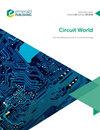用于光接收机的45纳米CMOS低功率多电平有源反馈跨阻放大器
IF 0.7
4区 工程技术
Q4 ENGINEERING, ELECTRICAL & ELECTRONIC
引用次数: 0
摘要
目的智能通信系统和技术领域的最新进展导致了电磁应用中超大规模集成电路设计的进一步发展。对低功耗、紧凑面积和卓越品质因数的电路设计的需求不断增加,这是最近研究的趋势。因此,为了实现这种用于光通信的应用,设计了跨阻抗放大器(TIA)。设计/方法/方法在这项研究工作中,作者提出了一种多层有源反馈结构,主要由跨阻抗级和增益级组成,然后是低通滤波器。这种结构能够实现改进的输入阻抗和优越的增益。还设计了一个简化的级联放大器,采用分层拓扑结构,以进一步改善噪声效应。所提出的TIA是使用台湾半导体制造公司45设计的 nm互补金属氧化物半导体技术。此外,还对−3 dB带宽下的热噪声进行了分析,以证明设计电路中使用的大多数设备的热噪声随着频率的增加而降低。发现所提出的差分TIA电路在不施加任何外部偏置电流的情况下获得了50.1dBO的跨阻抗增益,与传统电路相比,该外部偏置电流几乎是8%。除此之外,实现的带宽为2.15 GHz,仅有38 W的功耗,与传统电路相比,这是合理的100倍。因此,所提出的差分TIA适用于旨在在低电源电压下工作的低功率光通信应用。独创性/价值设计作品由作者在大学实验室完成,不会从任何地方复制。据作者所知,它是100%原创的。本文章由计算机程序翻译,如有差异,请以英文原文为准。
Forty five nm CMOS low power multilevel active feedback transimpedance amplifier for optical receivers
Purpose
Recent advancements in the domain of smart communication systems and technologies have led to the augmented developments for very large scale integrated circuit designs in electro-magnetic applications. Increasing demands for low power, compact area and superior figure of merit–oriented circuit designs are the trends of the recent research studies. Hence, to accomplish such applications intended for optical communications, the transimpedance amplifier (TIA) was designed.
Design/methodology/approach
In this research work, the authors present a multi-layer active feedback structure which mainly composes a transimpedance stage and a gain stage followed by a low pass filter. This structure enables to achieve improved input impedance and superior gain. A simplified cascaded amplifier has also been designed in a hierarchical topology to improvise the noise effect further. The proposed TIA has been designed using Taiwan Semiconductor Manufacturing Company 45 nm complementary metal oxide semiconductor technology. Moreover, the thermal noise has been analyzed at −3 dB bandwidth to prove the reduction in thermal noise with increase in frequency for most of the devices used in the designed circuit.
Findings
The proposed differential TIA circuit was found to obtain the transimpedance gain of 50.1 dBO without applying any external bias current which is almost 8% improvised as compared to the conventional circuit. In addition to this, bandwidth achieved was 2.15 GHz along with only 38 W of power consumption, which is reasonably 100 times improvised in comparison of conventional circuit. Hence, the proposed differential TIA is suitable for the low power optical communications applications intended to work on low supply voltage.
Originality/value
The designed work is done by authors in university lab premises and is not copied from anywhere. To the best of the authors’ knowledge, it is 100% original.
求助全文
通过发布文献求助,成功后即可免费获取论文全文。
去求助
来源期刊

Circuit World
工程技术-材料科学:综合
CiteScore
2.60
自引率
0.00%
发文量
33
审稿时长
>12 weeks
期刊介绍:
Circuit World is a platform for state of the art, technical papers and editorials in the areas of electronics circuit, component, assembly, and product design, manufacture, test, and use, including quality, reliability and safety. The journal comprises the multidisciplinary study of the various theories, methodologies, technologies, processes and applications relating to todays and future electronics. Circuit World provides a comprehensive and authoritative information source for research, application and current awareness purposes.
Circuit World covers a broad range of topics, including:
• Circuit theory, design methodology, analysis and simulation
• Digital, analog, microwave and optoelectronic integrated circuits
• Semiconductors, passives, connectors and sensors
• Electronic packaging of components, assemblies and products
• PCB design technologies and processes (controlled impedance, high-speed PCBs, laminates and lamination, laser processes and drilling, moulded interconnect devices, multilayer boards, optical PCBs, single- and double-sided boards, soldering and solderable finishes)
• Design for X (including manufacturability, quality, reliability, maintainability, sustainment, safety, reuse, disposal)
• Internet of Things (IoT).
 求助内容:
求助内容: 应助结果提醒方式:
应助结果提醒方式:


